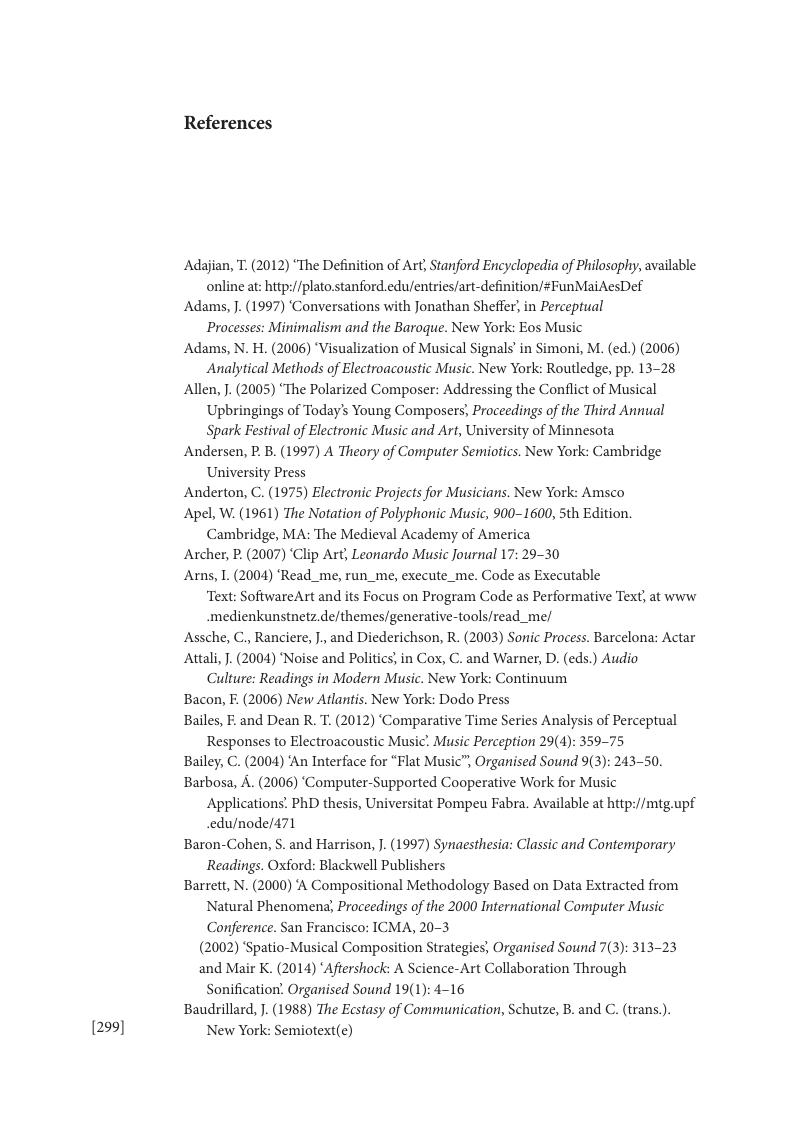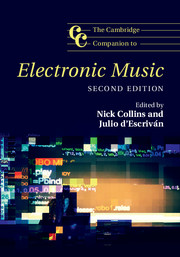Book contents
- The Cambridge Companion to Electronic Music
- Cambridge Companions to Music
- The Cambridge Companion to Electronic Music
- Copyright page
- Contents
- Illustrations and Figures
- Notes on Contributors
- Acknowledgements
- Chronology
- Introduction
- 1 The Origins of Electronic Music
- 2 Electronic Music and the Studio
- 3 Live Electronic Music
- 4 A History of Programming and Music
- 5 Interactivity and Live Computer Music
- 6 Algorithmic Composition
- 7 Live Audiovisuals
- 8 Network Music
- 9 Electronic Music and the Moving Image
- 10 Computer Generation and Manipulation of Sounds
- 11 Trends in Electroacoustic Music
- 12 Electronic Sound Art and Aesthetic Experience
- 13 DIY and Maker Communities in Electronic Music
- 14 Extending the Instrumental Sound World Using Electronics
- 15 The Analysis of Electronic Music
- References
- Index
- Miscellaneous Endmatter
- References
References
Published online by Cambridge University Press: 27 October 2017
- The Cambridge Companion to Electronic Music
- Cambridge Companions to Music
- The Cambridge Companion to Electronic Music
- Copyright page
- Contents
- Illustrations and Figures
- Notes on Contributors
- Acknowledgements
- Chronology
- Introduction
- 1 The Origins of Electronic Music
- 2 Electronic Music and the Studio
- 3 Live Electronic Music
- 4 A History of Programming and Music
- 5 Interactivity and Live Computer Music
- 6 Algorithmic Composition
- 7 Live Audiovisuals
- 8 Network Music
- 9 Electronic Music and the Moving Image
- 10 Computer Generation and Manipulation of Sounds
- 11 Trends in Electroacoustic Music
- 12 Electronic Sound Art and Aesthetic Experience
- 13 DIY and Maker Communities in Electronic Music
- 14 Extending the Instrumental Sound World Using Electronics
- 15 The Analysis of Electronic Music
- References
- Index
- Miscellaneous Endmatter
- References
Summary

- Type
- Chapter
- Information
- The Cambridge Companion to Electronic Music , pp. 299 - 316Publisher: Cambridge University PressPrint publication year: 2017



